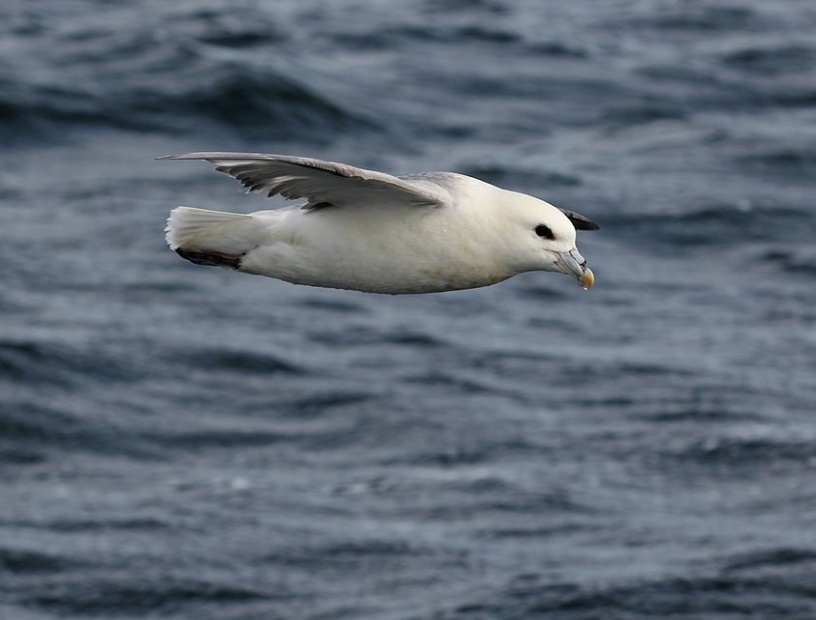Quick links
noddy ((1))
DCHP-2 (Mar 2014)
Spelling variants:noddie
1n. — Newfoundland, Fauna
Northern fulmar, fulmarus glacialis (see Image 1); also known as Arctic fulmar.
Type: 3. Semantic Change — The term noddy is used in several different countries to refer to birds of the Anous and Procelsterna families (OED-3, s.v. "noddy" (2a)). In Newfoundland, however, noddy was adopted by locals to refer to a bird that belongs to neither genus -- the northern fulmar (see DNE, s.v. "noddy (n.1)), and the 1974 quotation). James Yonge, a surgeon from Plymouth, during his travels to Newfoundland in the 17th century heard noddy used as a name for the sea-bird Anous stolidus (in Poynter 1963: 54). Thus, it is unclear whether noddy is a preservation from British English that was semantically altered, or a new term that arose because of the fulmar's tendency to nod its head in flight (see the 1945 and 1994 quotations).
See also COD-2, s.v. "noddy", which is marked "Cdn (Nfld)", and OED-3, s.v. "noddy" (n1 (2b)), which is marked "Newfoundland".
See also COD-2, s.v. "noddy", which is marked "Cdn (Nfld)", and OED-3, s.v. "noddy" (n1 (2b)), which is marked "Newfoundland".
Quotations
1945
Locally these birds are called 'noddys' or 'noddies' and several local observers say that the reason for this name is that they constantly nod their heads while flying. Most fisherman do not eat noddys but some say that they do and that noddy makes a delicious meal.
1967
Every region has its common names for birds. Newfoundland is no exception. In many cases, the Newfoundland names are variations of those in use in parts of the British Isles, several centuries ago. Others, especially those of sea-birds, are similar to the ones used by sailors in the Elizabethan age. [...] FULMAR: Noddy (from the habit of nodding its head while in flight.)
1974
NORTHERN FULMAR, Fulmarus glacialis. - Uncommon inshore during fall and spring storms. Recorded in June, October and November. Local name: Noddy.
1984
"[...]There are also northern fulmars (noddies) nesting on the island, one of only three places so far. It's important that people in the nearby communities realize how valuable Baccalieu Island is."
1993
Noddy Bay is a small fishing settlement on the northern tip of the Great Northern Peninsula, west of Quirpon qv. Noted by that name in 1763 by Capt. James Cook, the bay was named for the Atlantic fulmar, which nods its head in flight [...]. Noddies once nested in large numbers in the area and were caught for use as bait.
1994
The northern fulmar (Fulmarus glacialis), called "noddy" in Newfoundland from its habit of dipping its head in flight, is a close relative of the shearwaters, and is about the same size as the two common species. But it can be easily distinguished from them by its shorter, stouter bill. Longer wings, useful in gliding, help to distinguish it from the gulls while in flight. This species breeds mostly in the Arctic, but the populations in the North Atlantic have been increasing for more than two centuries. and the breeding range has expanded.
2005
If there is one bird that appears to live for storms, it is the northern fulmar, or noddy as it is known to Newfoundland fishermen. Fulmars live only in northern areas of the Atlantic and Pacific oceans, where storms are a way of life. The fulmar is actually more abundant in winter than summer off Newfoundland. They must like the weather better in winter.
References
- Poynter (1963)
- OED-3 • "noddy"
- COD-2
- DNE
Images
